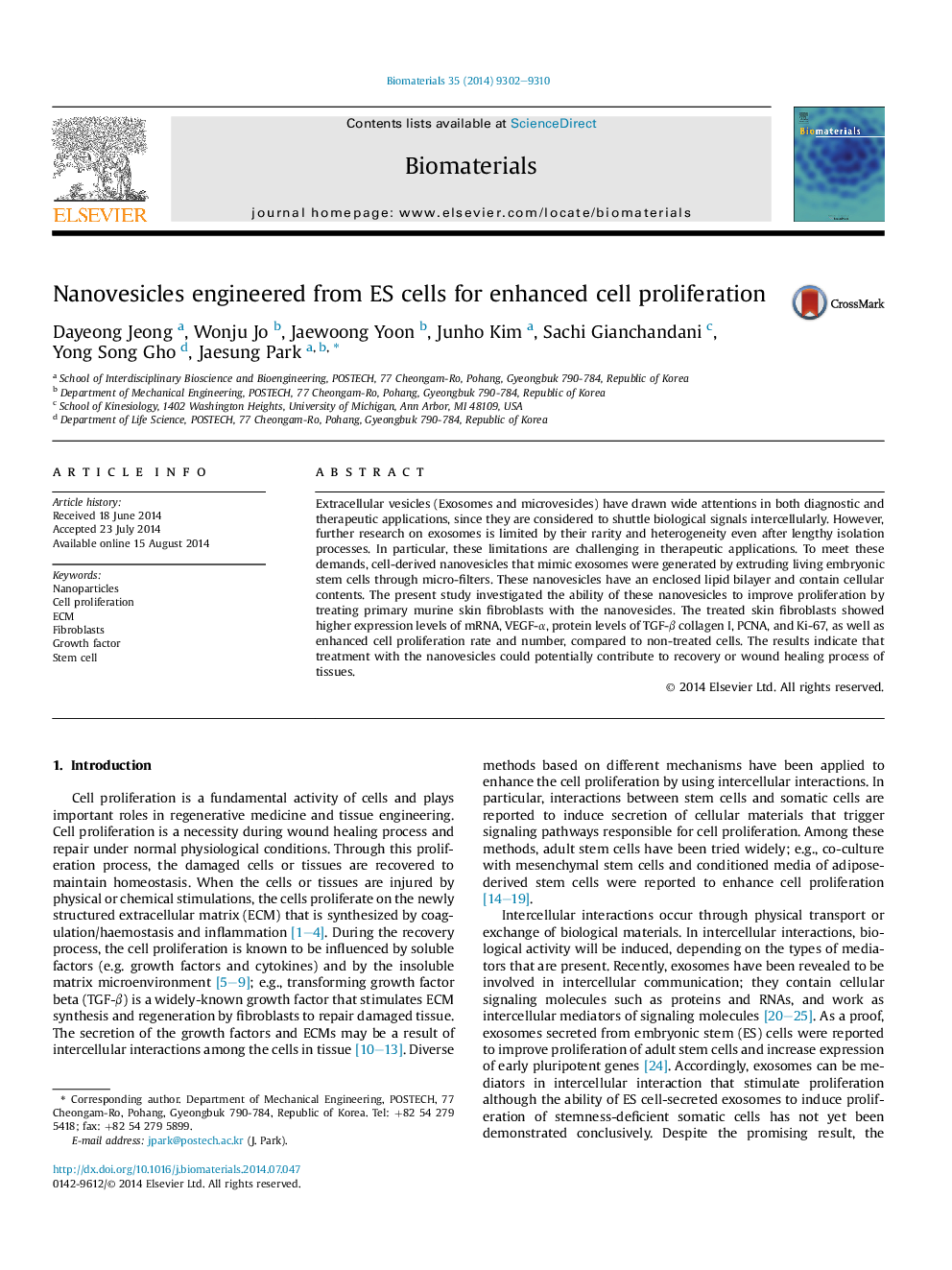| Article ID | Journal | Published Year | Pages | File Type |
|---|---|---|---|---|
| 6040 | Biomaterials | 2014 | 9 Pages |
Extracellular vesicles (Exosomes and microvesicles) have drawn wide attentions in both diagnostic and therapeutic applications, since they are considered to shuttle biological signals intercellularly. However, further research on exosomes is limited by their rarity and heterogeneity even after lengthy isolation processes. In particular, these limitations are challenging in therapeutic applications. To meet these demands, cell-derived nanovesicles that mimic exosomes were generated by extruding living embryonic stem cells through micro-filters. These nanovesicles have an enclosed lipid bilayer and contain cellular contents. The present study investigated the ability of these nanovesicles to improve proliferation by treating primary murine skin fibroblasts with the nanovesicles. The treated skin fibroblasts showed higher expression levels of mRNA, VEGF-α, protein levels of TGF-β collagen I, PCNA, and Ki-67, as well as enhanced cell proliferation rate and number, compared to non-treated cells. The results indicate that treatment with the nanovesicles could potentially contribute to recovery or wound healing process of tissues.
